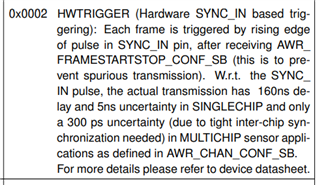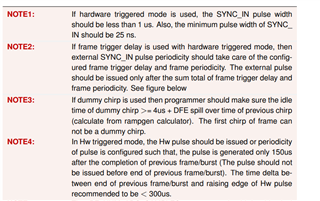Hi,
Our system requires synchronization between multiple radars and a master device. We are currently interested in implementing a single-shot mechanism, i.e., when the radar receives a command from the master, it will perform a scan, and then return the result to the master. How do we implement this feature using the mmWave library? We have tried the MMWave_stop () and MMWave_start (&startCfg) APIs, and they take way too much time and thus are feasible.
Alternatively, is there any other mechanism we can do to synchronize multiple radars with a master device? The radars are using one single communication line, so they will need to be synced to avoid conflicts.
Many thanks,
Po-Chih Chen
-
Ask a related question
What is a related question?A related question is a question created from another question. When the related question is created, it will be automatically linked to the original question.



 .
. 